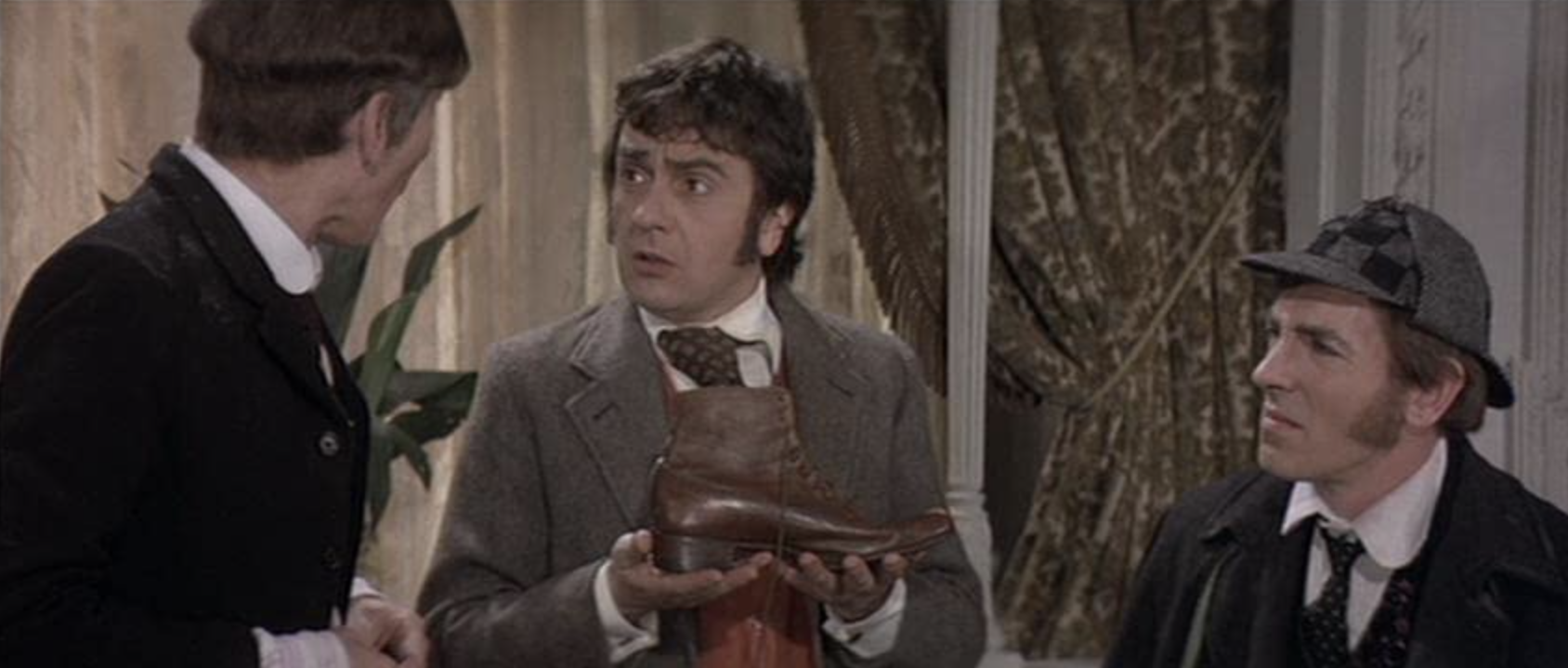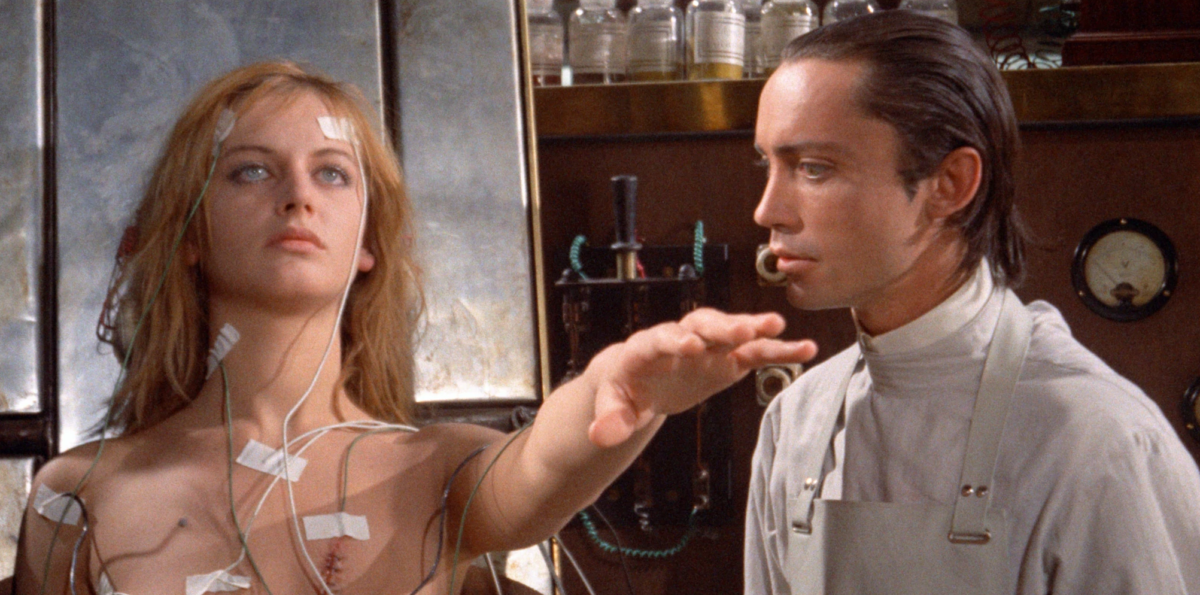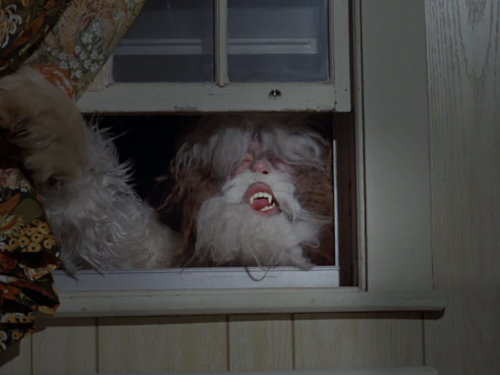The critically maligned Sherlock Holmes parody receives a Blu-ray upgrade this week. We look at the film from the perspective of its place within the career of its iconoclastic director
With many of his films having been unavailable in America for decades, 2021 is shaping into a great year for Paul Morrissey. First, his Italian-made horror comedy Blood for Dracula (1973) has been made available — in a deluxe 4K UHD/Blu-ray set no less — for the first time since Criterion’s 1998 DVD edition went out of print. Later in the year, Dracula’s companion film, Flesh for Frankenstein (1973), will also receive a home video release in 4K UHD with a 3D Blu-ray. Considering how hard it has been to see many of Morrissey’s films in this country, these lavish new editions of his classic horror comedies are surely among the year’s most significant home video releases.
But a third Morrissey film will be receiving new life in 2021 as well. The Hound of the Baskervilles (1978), the oft-maligned spoof of the classic Sherlock Holmes novel, has received an impressive Blu-ray upgrade from Code Red and Kino Lorber. This is a curious release from nearly every perspective. Conceived primarily as a reunion for the comedy duo of Peter Cook and Dudley Moore (The Wrong Box, Bedazzled), the film was savaged by critics upon its premiere. Morrissey himself disowned it, calling it “the only film [he] ever made reluctantly.” The film stands as an odd transitional project for all of its principal contributors, but especially for Morrissey. Baskervilles is certainly his weakest movie, but it holds an important place in his career for being the first major film project he made without the involvement of Andy Warhol.
Related: Read about Morrissey’s Flesh for Frankenstein and Blood for Dracula
Morrissey’s career prior to Baskervilles is marked by a series of masterpiece independent films made in association with The Factory, Warhol’s famous New York art studio. Morrissey rose to prominence within the Factory in the mid-1960s, eventually taking over a great deal of the serious creative and business ventures of the studio. He had a role in forming the Velvet Underground and was a crucial force behind Chelsea Girls (1966), the first major film put out by Warhol and the Factory. Along with his Italian horror comedies, Morrissey’s greatest work from this early period is a trio of films starring Joe Dallesandro as a hustler — Flesh (1968), Trash (1970), and Heat (1972). He had near-complete control on these films. As noted by Dallesandro and other collaborators, Morrissey was often the only crew member working on the set, running the camera and sound equipment, while directing the actors and any other job that might need doing along the way.
To this day, many still misattribute Morrissey’s films to Warhol, whose name was emblazoned upon all the promotional materials. But the differences between Morrissey and Warhol productions are striking. The films that Warhol made before Morrissey took the reins tend to be incredibly loose. He allowed improvisations to run long and wild. Warhol’s approach to film direction was to start the camera and then read the paper while his actors made up a scene. This technique allowed for some fascinating interactions, but there is a marked difference in the films once Morrissey gained creative control.
In works like Flesh, Trash, and Women in Revolt (1971), Morrissey had the privilege of casting his films with Warhol’s Superstars, one of the most bizarre collections of artistic misfits ever assembled for the benefit of creative endeavors. But more importantly than having such a wild variety of personas at his disposal, Morrissey had an incredible eye for casting. His films maintain that loose quality of Warhol’s work in regard to his direction, but have a stronger sense of structure. This brought out more dynamic performances and ultimately developed a new dramatic dimension to the Factory’s filmwork. He eventually made his way to Europe, and through his association with Warhol, secured a two-film contract to make Flesh for Frankenstein and Blood for Dracula (later released as Andy Warhol’s Frankenstein and Andy Warhol’s Dracula) at Cinecittà in Rome. These were the last of his films to be produced with Warhol’s involvement.
As quoted by Maurice Yacowar, Morrissey’s unifying ethical concern within his films is to “remark upon the waste of life.” The notoriously grouchy and conservative filmmaker made movies about drug addicts, sex workers, and a vampire who is starving to death because he can’t find the blood of a virgin anywhere in Europe. Morrissey mostly speaks of his characters as liberal derelicts, expressing contempt for their careless and often destructive lifestyles. But when one watches his work, the characters are given a remarkable amount of freedom to be themselves. While he bad mouths them in interviews, the films appear more compassionate than anything else. Look no further than Holly Woodlawn’s stunning performance in Trash as Dallesandro’s girlfriend. For a movie he claims to have named Trash because “there is no difference between a person using drugs and a piece of refuse,” the tone of the film presents a contradiction to his own interpretation of his movies. His films can be incredibly lively in their openness to be given over to the Superstars and his other performers, a list which came to include Udo Kier, Vittorio De Sica, Kevin Bacon, and Ernest Borgnine. And Morrissey’s sense of humor, especially in his horror comedies, while almost always black as night, takes such wild and extravagant turns that you can’t help but recognize a playfulness in his style, as if at least some of his moralizing should be taken with a grain of salt.
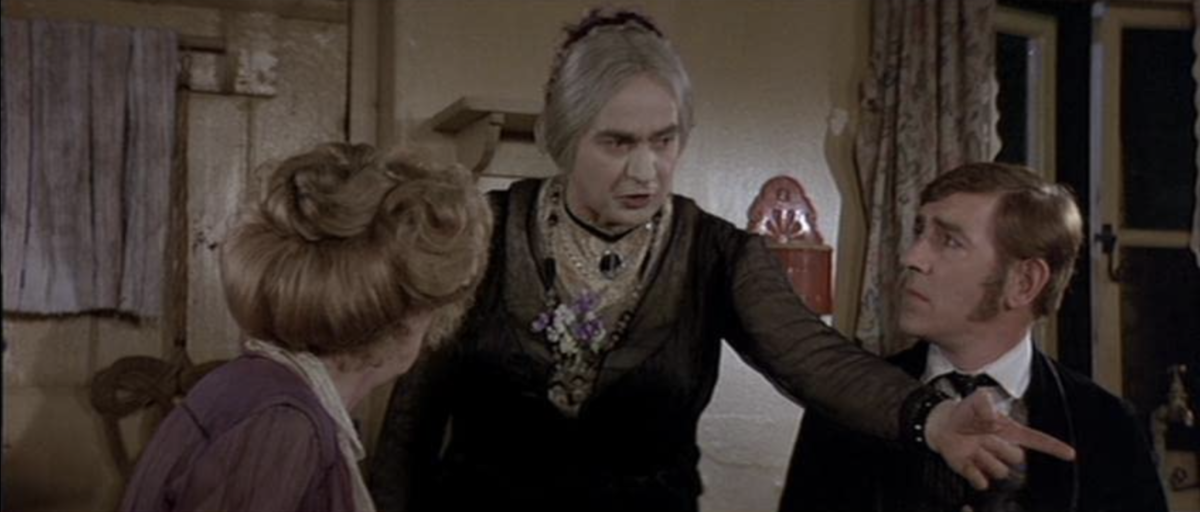
In an interview included with the new Severin Films release of Blood For Dracula, Morrissey says the studio promised him the freedom to write Hound of the Baskervilles in a style similar to his Frankenstein and Dracula films. Cook was set to play Sherlock Holmes and Moore would be Dr. Watson. Baskervilles makes a lot of sense for Morrissey as a follow up to his Italian horror comedies. Sherlock Holmes should have been right in his wheelhouse. When one considers the moral depravity in the opening flashback sequence of Hammer’s 1959 adaptation of the story — which plays up the decadence and debauchery of the wealthy Baskerville ancestors that initiates the curse — you can see exactly what might have enticed Morrissey to agree to the project. As proven with his collaborations with Udo Kier playing Dracula and Dr. Frankenstein, Morrissey could mix comedic performances and horror extremely well. His layering of blood-gushing comedy within the gothic narratives of Frankenstein and Dracula make the films masterworks of period-piece absurdity. He could do both subtle humor (for instance, the classic recurring gag with Dracula shielding himself from sunlight with just his palm) and outrageous 3D gore effects without overwhelming the films.
But his freedom to make Baskervilles his way was short lived. According to Morrissey, he began writing soon after he agreed to join the production, but was quickly told that Dudley Moore — whose career in Hollywood was just starting to take off — had decided he wanted to write the movie. (Cook would also contribute to the screenplay.) “I went ahead and made it,” says Morrissey. “It didn’t have my kind of people in it… I loved Peter Cook but I didn’t like Dudley Moore, and he wasn’t funny… It’s an odd film and I’m not the author. I might have credit, but I didn’t have the authority.”
Baskervilles is far from a strong film. Blame is often cast at Morrissey for the film’s deficiencies. But the failure of Baskervilles is mostly due to a mismatch of collaborators. The film feels very much like a director-for-hire gig. It is clearly Cook’s and, even more so, Moore’s show. But the duo’s work here is a far cry from their prime-era of Bedazzled or their famous television sketches. Few of the jokes work and most of the performances, not just from Cook and Moore, feel forced and straining for inspiration. Unlike Morrissey’s great films, Hound of the Baskervilles was conceived to be “starred” in, rather than acted in as an ensemble. Cook and Moore surrounded themselves with a who’s-who of British screen comedy (Spike Milligan, Terry-Thomas, and Kenneth Williams among others), but most of the performers look lost.
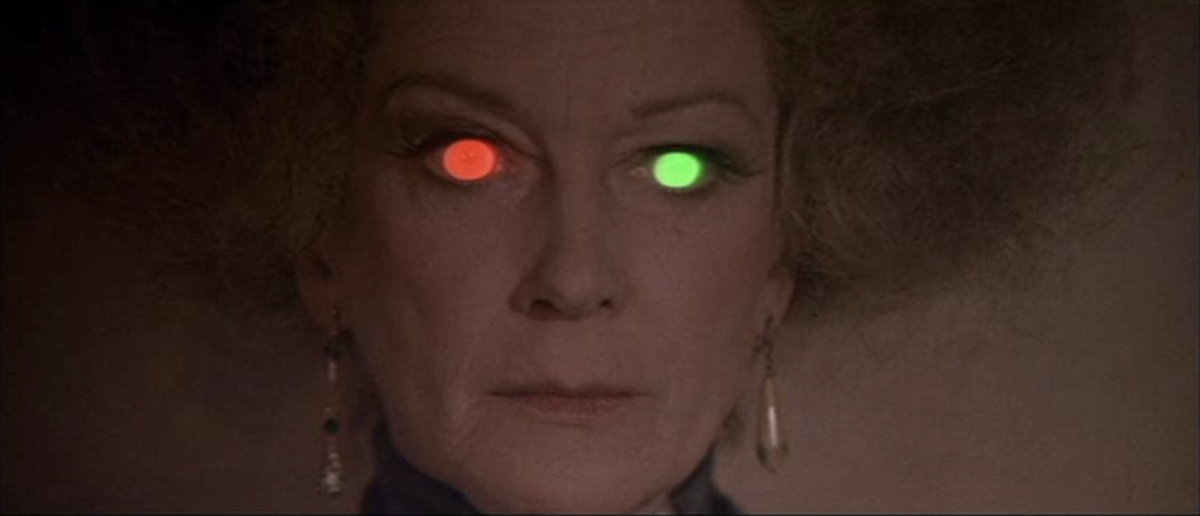
The difference between Morrissey’s style and that of Cook’s and Moore’s in Baskervilles, is that Morrissey wasn’t interested in merely spoofing his subject. As noted by Yacowar in The Films of Paul Morrissey (1993), Cook and Moore were clearly trying to bring a music hall aesthetic back into the modern age of British comedy, which was being spearheaded by more cerebral acts like Monty Python. The film is constructed out of a series of sketches, many of which have little to do with the story of the Baskerville curse. Moore plays four total roles within the film, and none of them are particularly funny. His Dr. Watson is incredibly stupid while suffering at the hands of overlong and crude gags, the worst of which involve Moore being urinated on continuously by a small dog, and vomited on in an obnoxious parody of The Exorcist. Cook’s Holmes is almost entirely unremarkable. To be honest, I barely remember anything he does in the film beyond a scene where he is mocked by a masseuse and a visit to his mother (played by Moore). You can sense that Morrissey may have taken a cue from Warhol on this project by sitting back and disengaging while the egos in front of the camera tried to out-silly each other.
Morrissey often speaks admiringly of the great studio-era directors like William Wyler and George Cukor, but he is even more adamant about the importance of movie stars. He saw films as “vehicles for stars,” not the directors. But for the innovative underground filmmaker, who controlled nearly every aspect of his early films, his first and only experience working with established movie stars in a standard studio production was far from a productive one. Under the power structure of the studio, the biggest names get the right of way. And under the circumstances, with the reunion of Cook and Moore being the primary selling point for the film, it makes sense that Morrissey would sit back and give in to the bigger names involved with Baskervilles. As he himself said, the film didn’t star his “type of people.” These were movie stars he was dealing with, not the Superstars he collaborated with on his Factory-era films.
In his later work, which includes several brilliant films like Forty Deuce (1982) and Mixed Blood (1985), Morrissey found great success mixing professional and non-professional actors. He had an eye for presence; He wanted naturalness in front of the camera and would often cast different styles of performers within the same film with great effect. The type of film that Baskervilles turned into throughout its production was anything but natural. Unfortunately, the film never coalesced into a unified work. Nevertheless, it is a fascinating look at a fiercely independent spirit being sucked into an industrial production, dealing with stars and egos, on a brief foray into mainstream moviemaking. Here’s hoping that the release of an obscure title like Hound of the Baskervilles is a sign that Morrissey’s later, more passionate projects, such as Forty Deuce and Mixed Blood, can soon follow suit and receive new home video releases as well.
Find the complete October Horror 2021 series here:
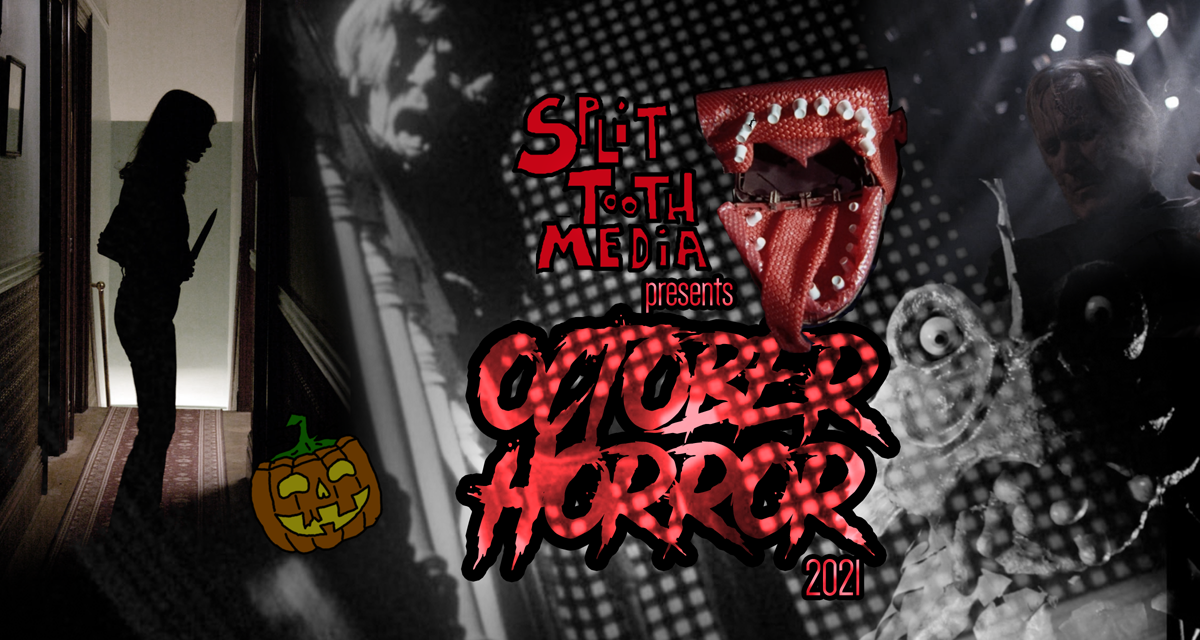
Purchase The Hound of the Baskervilles on Blu-ray from Kino Lorber or Amazon
Stay up to date with all things Split Tooth Media and follow Brett on Twitter and Letterboxd
(Split Tooth may earn a commission from purchases made through affiliate links on our site.)

